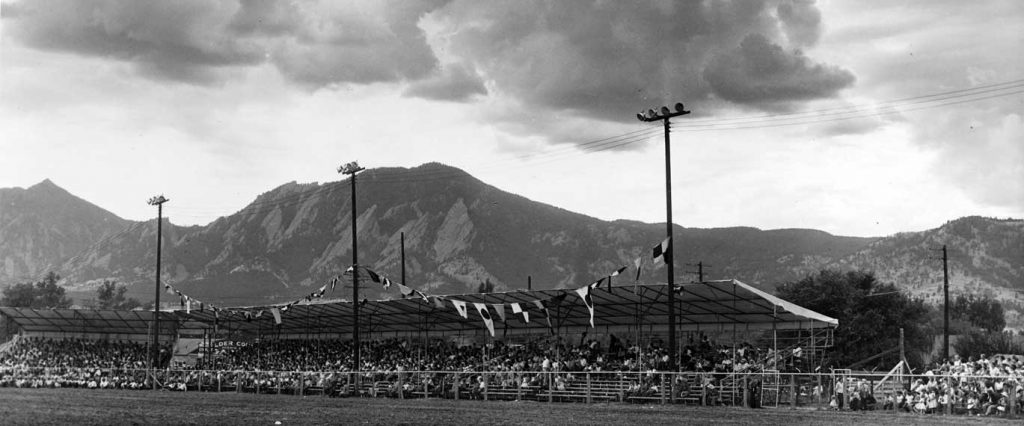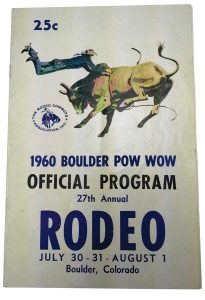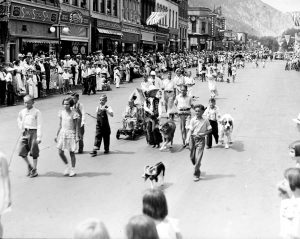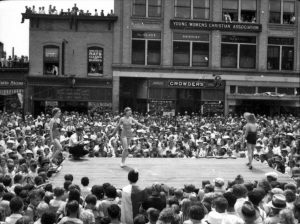When Pow Wow Rodeo Ruled the Roost in Boulder
02 Jun 2017
First Pow Wow helped pull local economy out of the Great Depression
By Charmaine Ortega Getz In 1934, Boulder civic leaders brainstormed an idea to help pull community spirits—and the local economy—out of the Great Depression. Unlike the traditional Native American gatherings known as powwows, this “Miners’ and Farmers’ Jubilee” had much to do with the West but little to do with Indians. The Boulder Junior and Senior Chambers of Commerce and the Boulder County Metal Mining Association held the first “Pay Dirt Pow Wow” on Aug. 1, 1934—Colorado Day, commemorating the territory’s Aug. 1, 1876, admission to the United States.
rock-drilling competitions. (photo courtesy Carnegie Library for Local History, Boulder)

Huge Hit Socially
The Pay Dirt Pow Wow was a huge hit socially. Receipts made up about 60 percent of expenses, with “pledges” from merchants and other contributors expected to make up the rest.

Charmaine Ortega Getz, author of Weird Colorado: Your Travel Guide to Colorado’s Local Legends and Best Kept Secrets, is also business manager for Rocky Mountain Revels, which produces the annual Christmas Revels held at Dairy Arts Center.












